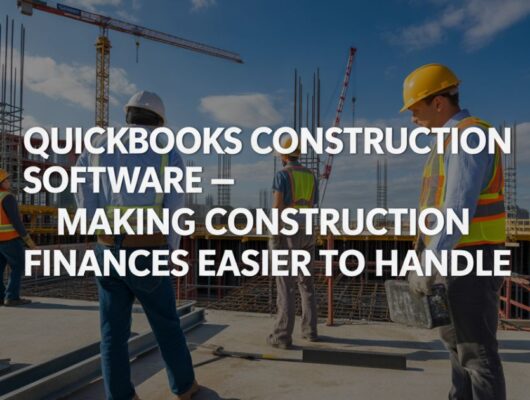Walk into any contractor’s office twenty years ago and you’d see the same thing, piles of papers, rolled-up blueprints, and a tired calculator that’s seen better days. That’s how bids were made back then: by hand, with plenty of guesswork and a little luck. Fast-forward to today, and the scene has changed.
Those same builders who once stayed up late with pencils now tap on screens and get answers in seconds. The reason? Bidding software for construction. It doesn’t make noise. It doesn’t lift a hammer. But quietly, it changed the entire game.
From Paper to Pixels
Before digital tools, bidding was messy. Prices shifted every day. Versions got mixed up. A single wrong number could ruin the entire estimate.
Then came bidding software for construction, and that chaos disappeared. Now, everything lives in one place, numbers, files, blueprints, all neat and updated in real-time. No more printing stacks of pages just to check one cost.
No more chasing suppliers for price updates. Everything’s just… there. For many contractors, it feels like someone finally cleared the desk and said, “Relax. We’ve got this.”
Why Builders Swear by It
Ask any contractor why they rely on bidding software for construction and they’ll likely say one word, time. What once took two days now takes two hours. The system tracks costs, stores documents, and keeps everyone on the same page.
When a price changes, it updates everywhere. When a file’s missing, it’s right there waiting. But time isn’t the only win. Accuracy is the real treasure. In construction, margins are tight. One mistake can eat your profit. This software keeps the numbers straight, the data clean, and the team aligned.
Not Just for Big Companies
Some folks still think bidding software for construction is only for the big players. Not true. Small contractors often get the most out of it. When your crew is small, every hour counts. Having one place that organizes bids means less stress and fewer surprises. It also helps smaller firms look sharp and professional. A clear, polished bid builds client trust before a single brick is laid.
And the best part? The software grows with you. As your projects scale, it scales too, no switching, no re-learning.
What Makes Good Bidding Software
There’s a lot of software out there, some clunky, some sleek. But good bidding software for construction should make life easier, not harder. It should:
- Estimate materials and labor fast
- Store blueprints, quotes, and supplier info in one place
- Let teams comment or edit together
- Sync with your project management and accounting tools
It should feel like a quiet helper, not another headache.
A Team Tool, Not Just a Tech Tool
The real magic isn’t automation. It’s teamwork. Before, estimators, managers, and engineers all worked in separate corners. Now, everyone sees the same thing, instantly. Notes stay logged, changes tracked, and confusion? Almost gone.
That shared clarity keeps the project flowing and helps you look back later to see what worked, who did what, and why.
Learning from the Past
Each bid becomes a lesson. Over time, the software builds a record, which bids hit, which missed, where the numbers drifted. That data turns into wisdom. So when the next project comes along, you don’t start from scratch, you start smarter. In a way, bidding software for construction becomes your silent teacher, helping your business refine with every project.
A Change Worth Making
Sure, not everyone loves change. Some builders still stick to notebooks and spreadsheets and that’s fine. But clients move faster now. Deadlines tighten. Paper just can’t keep up anymore. Switching to bidding software for construction isn’t about trends. It’s about staying relevant and ahead. Once you make the switch, you’ll wonder why you waited.
Final Word
Construction is all about strong foundations and bidding is one of them. Getting it right changes everything that follows. Bidding software for construction takes the guesswork out of pricing, the mess out of organizing, and the stress out of teamwork. It’s not just software, it’s a smarter way to build. And in a field where time, trust, and precision decide success, that’s a change worth making.








